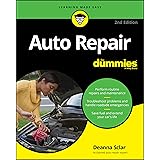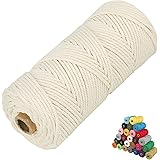Transform Your Kitchen: The Ultimate DIY Marble Countertop Guide
Many homeowners and renters dream of a sleek, modern kitchen, often envisioning the luxurious appeal of marble countertops. However, traditional marble installations can be incredibly expensive and impractical, especially for temporary living situations. The good news is that a stunning kitchen transformation doesn’t require a massive budget or a permanent commitment. As the video above demonstrates, a DIY marble kitchen makeover using contact paper offers an accessible and beautiful solution.
Imagine effortlessly upgrading your existing surfaces, turning a dated kitchen into a contemporary space without the hefty price tag. This guide dives deeper into the process, providing insights and tips to ensure your DIY marble kitchen project is a resounding success, just like the one showcased in the video.
Why Choose DIY Marble Contact Paper for Your Kitchen Makeover?
The allure of marble contact paper for a kitchen upgrade extends far beyond its aesthetic appeal. It represents a smart, budget-friendly choice for anyone seeking a significant visual impact with minimal investment. Primarily, it’s an ideal solution for renters who want to personalize their living space without violating lease agreements. The peel-and-stick nature of this material means it’s fully removable, leaving no damage to the original countertops when it’s time to move out.
Furthermore, marble contact paper acts as a protective layer, safeguarding your existing surfaces from everyday wear and tear. It allows you to experiment with a high-end look, offering a taste of luxury that can easily be changed if your style evolves. This temporary yet impactful solution makes a dated kitchen feel fresh and modern, boosting both your home’s aesthetic and your overall enjoyment of the space.
Gathering Your Essential Tools and Materials for a Seamless Application
Before embarking on your DIY marble kitchen adventure, proper preparation is key. Having all your tools and materials organized beforehand will streamline the process and minimize frustration. Here’s a detailed list of what you’ll need, building on the video’s recommendations:
- Marble Contact Paper: Opt for high-quality, durable contact paper, ideally with gridlines on the backing for precise cutting. The speaker in the video found theirs on Walmart’s website, highlighting the accessibility of this material.
- Windex or All-Purpose Cleaner: Essential for thoroughly cleaning your countertops. A grease-free, dust-free surface is crucial for optimal adhesion.
- Paper Towels or Microfiber Cloth: For cleaning and drying the surfaces. Microfiber cloths are excellent for avoiding lint.
- Sharp Scissors: For initial cutting of larger pieces. Very sharp scissors, as demonstrated, make this much easier.
- Utility Knife or Box Cutter: While scissors work, a sharp utility knife or box cutter offers superior precision for trimming excess paper along edges and corners. Always use a cutting mat or a protected surface underneath.
- Measuring Tape: For accurate measurements of your countertop sections.
- Smoothing Tool: A gift card, credit card, or a specialized felt-edged squeegee is indispensable for pressing down the contact paper and eliminating air bubbles.
Step-by-Step Guide to Applying Your Marble Contact Paper
1. Prepare Your Countertop Surface
A flawless finish begins with a meticulously clean surface. Before applying any contact paper, thoroughly clean your countertops using Windex or a similar all-purpose cleaner. Ensure you remove all food particles, dust, grime, and any sticky residues. After cleaning, dry the counters completely. Even the smallest speck of dust can create a bump or prevent proper adhesion, leading to unsightly bubbles in your finished contact paper countertops.
2. Precision Measuring and Pre-Cutting Your Contact Paper
Accurate measurements are paramount for a professional-looking result. Use your measuring tape to determine the length and width of each section of your countertop. When cutting the contact paper, always add an extra inch or two on all sides. This excess provides leeway for alignment and allows you to trim precisely along the edges later. The gridlines on the backing paper are invaluable here, serving as a guide for cutting straight lines. Pre-cutting all your major pieces, as suggested in the video, significantly speeds up the application process and reduces interruptions.
3. Mastering the Peel-and-Stick Application
This is where patience becomes your greatest asset. Start by peeling back only a few inches of the contact paper’s backing from one end. Align this exposed edge with the back edge of your countertop, ensuring it’s straight. Slowly and steadily, peel away more of the backing paper with one hand while simultaneously using your smoothing tool with the other. Work from the center outwards, firmly pressing down the contact paper and pushing out any air bubbles as you go. Overlapping strokes with your smoothing tool will help ensure a uniform, bubble-free surface for your new marble contact paper countertops.
4. Navigating Edges, Corners, and Irregularities
Dealing with edges and corners can be the most challenging part, as the speaker in the video highlights. For straight edges, gently wrap the excess contact paper around the edge and tuck it underneath the countertop, pressing firmly to secure it. If you have a non-straight edge, like a curve, you might need to make small relief cuts in the excess paper to allow it to conform without creasing. Once tucked, use your smoothing tool or hand to ensure it’s firmly adhered. For any overhang on the front or side, carefully trim the excess with your sharp utility knife or scissors, keeping the blade flush against the countertop edge for a clean, crisp finish. Don’t worry if it’s not perfect on the first try; you can often lift and reposition the paper, or use small scraps to patch tiny uncovered areas, blending them seamlessly for your `DIY marble kitchen`.
5. Addressing Tricky Areas: Backsplashes and Trim
Beyond the main countertop surface, you might encounter backsplashes or small trim pieces that also need covering. For these areas, measure and cut smaller, precise pieces of contact paper. The application process remains similar: peel, stick, and smooth. For vertical surfaces like backsplashes, working from top to bottom often yields the best results. Be mindful of aligning patterns if that’s a feature of your chosen contact paper, especially when piecing together smaller sections. The video shows how easily small cut-out pieces can extend the marble aesthetic to these smaller, yet significant, sections of your kitchen.
6. Troubleshooting Common Contact Paper Challenges
It’s rare for a DIY marble kitchen project to be entirely without hiccups, and the video candidly shares this reality. If you encounter air bubbles that refuse to smooth out, a tiny pinprick in the center of the bubble can release the trapped air, allowing you to press it flat. If a section is crooked, carefully peel it back and reposition it. The adhesive usually allows for a few reattempts. For small gaps or areas where the original countertop still shows, cut small, irregularly shaped scraps of contact paper and carefully fit them into place, trimming them to blend in. The key is patience and a willingness to adjust, ensuring your `contact paper countertops` look their best.
Beyond the Basics: Tips for Long-Lasting Marble Contact Paper Countertops
While marble contact paper is a temporary solution, you can extend its life and maintain its pristine look with proper care. Always use cutting boards to protect the surface from scratches and knife marks. Avoid placing hot pots and pans directly onto the contact paper; use trivets instead, as extreme heat can melt or damage the material. For daily cleaning, a mild soap and water solution or a gentle all-purpose cleaner is sufficient. Steer clear of abrasive cleaners or harsh chemicals, which can degrade the contact paper’s finish. With these simple maintenance practices, your stunning `DIY marble kitchen` will continue to impress for months, if not years, demonstrating the incredible impact of a smart, achievable home upgrade.







